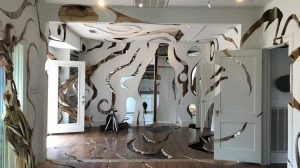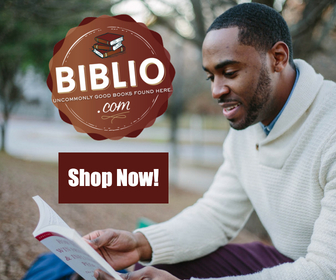
1982
SoHo
Painting can be an evil mistress. She can love you tender and she can love you raunchy, and she can rip your guts apart.
When you put that last stroke on your canvas and you know you’ve done it right, and you step back to look at what you’ve done, a deep sigh comes all the way up from your loins and you say “Yes! Yes, by God, I did it.”
But it can also be like a cramp in the pit of your stomach that wrenches your intestines and won’t let go; because to make a painting you have to reach deep down inside and pull it out, and when it doesn’t come it’s like the dry heaves. And the
loneliness of it! The loneliness is unbearable. You’re all alone in a huge loft and you’re slinging paint with concentration so intense it’s exhausting, and when you finally set your paint bucket down and step back to see what you’ve done there is not a soul to share that moment with, be it ecstasy or be it loathing; because you’ve experienced a rape or a battle or the most tender of caresses, and it was all between you and that goddamn canvas; and suddenly you get this memory flash from back when you were in art school and your professors ripped your work apart, and you look at your painting and you can’t even see it. You haven’t the slightest idea whether it’s art or crap. So you grab the freight elevator down to the street and you walk to the corner bar and get gloriously drunk.
Red Warner wrote those words. He wrote them in that bold scrawl of his. He wrote them in his journal not long after his final exhibition and that now-famous party that ended with a scream and a mad rush of fleeing bodies, and Red Warner slumped on the floor in a pool of blood like the day’s washing from a slaughterhouse.
The New Cedars Bar
Manhattan, New York
The New Cedars Bar was dark inside. A deeply scarred mahogany bar dominated the narrow room. It looked like a whale washed onto shore. Diffracted afternoon light slanted through dusty windows that opened onto Broome Street, casting a parallelogram net of yellow on the hands of chess players who nursed their beers while plotting their next moves. A stream of
dust motes floated from there to the corner booth where Randall Jarrett, the art critic, lounged in his black suit, watching the men at the bar. They were an intimate group, argumentative and familiar. They arranged themselves casually on their bar stools in a triad, like a Renaissance composition, with the burly redhead in the center. He was wearing paint-splattered overalls and a plaid shirt with a frayed collar. He sat loosely on his stool, and his heavy body lurched when he laughed — which he did often and loudly. Everyone in the New Cedars Bar turned at the sound of his booming laugh.
He swiveled around and hefted his beer mug as if proposing a toast, and announced, “I’m for an art that ejaculates!”
Randall Jarrett smiled to himself with a smile that said here he goes again.
A group of out-of-towners who had drifted in carrying packages from a nearby boutique stopped and looked at each other, questioning their choice of bars.
Red Warner bellowed, “I’m for anarchistic art!
Someone shouted, “Amen!”
Red bellowed, “I’m for an artist who turns down galleries.”
“Right on!”
“I’m for an artist who vanishes, only to reappear ten years later as a fisherman living in the wilderness.”
“Yeah!”
“I’m for Goya’s madness and van Gogh’s ear and Rothko’s suicide! I’m for confrontational desperational art!”
Randall Jarrett shook his head, wondering where he had heard it before, that repeated phrase, “I am for an art, I am for an art.” It was something he should know. Red Warner was quoting somebody, or paraphrasing, but Jarrett couldn’t figure out whom.
A big grin played across Red Warner’s face. Blue eyes alive like lasers, red-rimmed and swollen, he scanned his audience, recognizing the art critic in the corner. Good. With any luck his aphorisms would be quoted in Wednesday’s paper. It had been a long time since his name had been in print, and he needed any publicity he could get — especially now, with his show scheduled to open in two weeks and his career on the downturn.
Red Warner had come to New York from a little town down south. He had come to town, and he had made it. Made it big. His paintings were on the cover of Art News and Art Forum. He showed up in gossip columns and was considered a must on the guest lists of anyone who was anyone. He was, for a while, the darling of the art world; famous for his outrageous way of talking, a hybrid of Beat Era speed rapping and Southern revivalist preaching, for his legendary debauchery, and, of course, for those harshly dramatic abstract paintings that made viewers so deliciously uneasy. But at the height of his career his work fell out of fashion. Critics said he was undisciplined and accused him of repeating himself — as if every other artist in New York didn’t do the same, as if the market and the gallery system and those self-same critics (particularly Randall Jarrett ) didn’t demand it of them.
His dealer, Leo Garner, threatened to drop him if his next show was not a success, and he had been painting with a vengeance for the past month, determined to shock the art world with a new, more powerful Red Warner. He had been living on speed and booze and coffee and cigarettes, going without sleep until he dropped, stopping his frenzied work only long enough to stagger down to the New Cedars Bar to make an occasional appearance.
The chess players and the art critic and Red’s fellow artists at the bar all swam in a haze of tears before his burning, booze-bleary eyes. He said, “I am for an art that destroys itself through its own excesses. Down with namby-pamby, non-committal art. Down with no-hand-of-the-artist art. Down with…”
What? Red Warner had never before been at a loss for words. Years before he had created and perfected a public persona that he called the Redneck Dean Moriarty, an alter ego patterned after Kerouac’s character from On The Road, with a heavy dose of Southern black and revivalist preacher lingo. This character was never at a loss for words. He could spew forth an endless tidal wave of poetry, with never a pause to let his thoughts catch up.
So how could he end his dangling sentence? He thought quickly and said, “Down with this beer,” and swigged the liquid down in a series of great gulps. Then he pushed himself off the bar stool and walked out of the bar and across Broome Street. Everyone in the bar watched him step onto the loading dock and unlock the freight elevator and disappear into his loft, where he had been working on a new series of paintings. Word was this new work would either be the most revolutionary thing since de Kooning’s Woman I or the pitiful, dying gasp of a no-talent painter who had made it big on sheer bravado. Most bets were on the latter, partly out of envy.





Leave a Reply